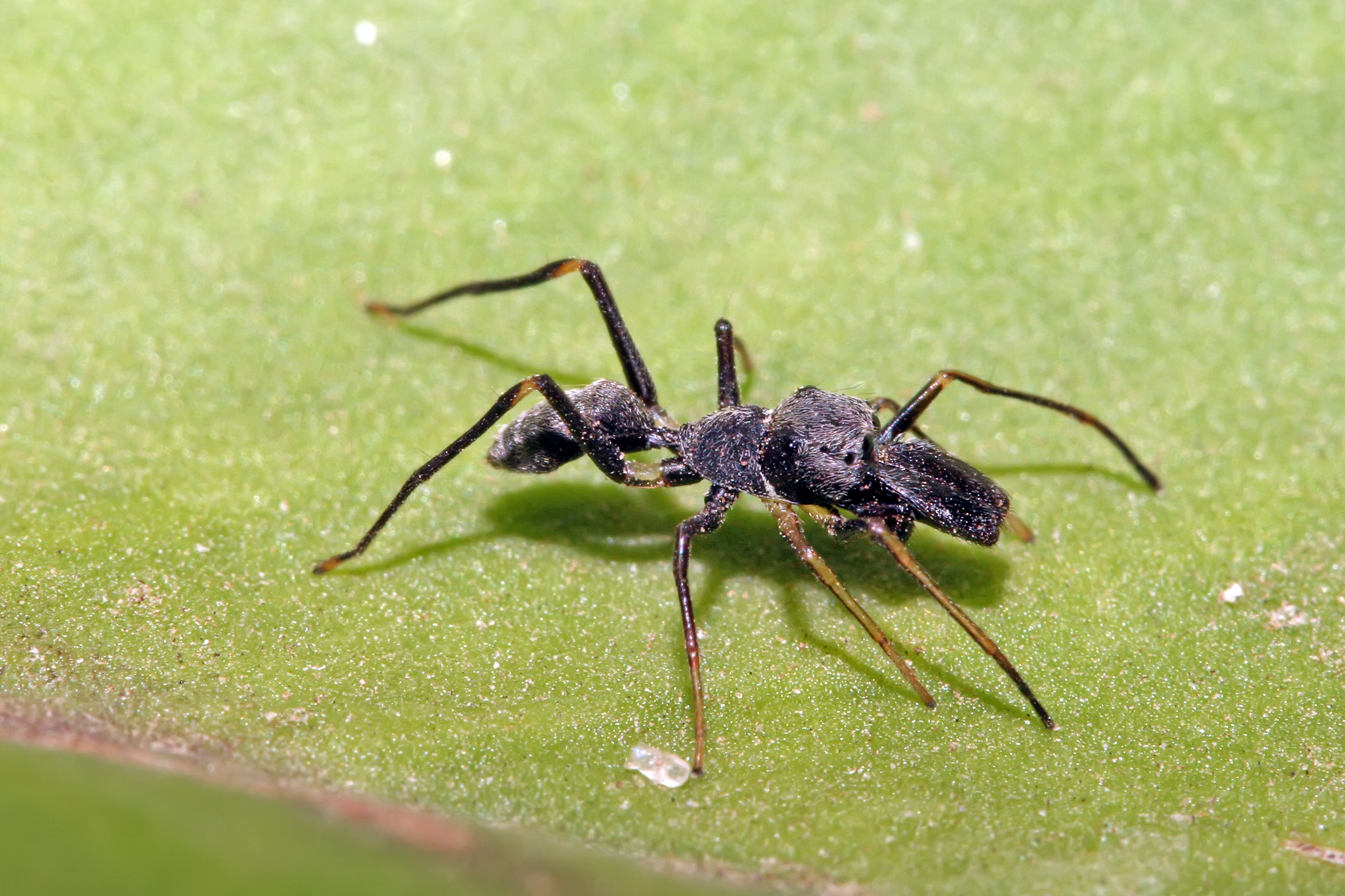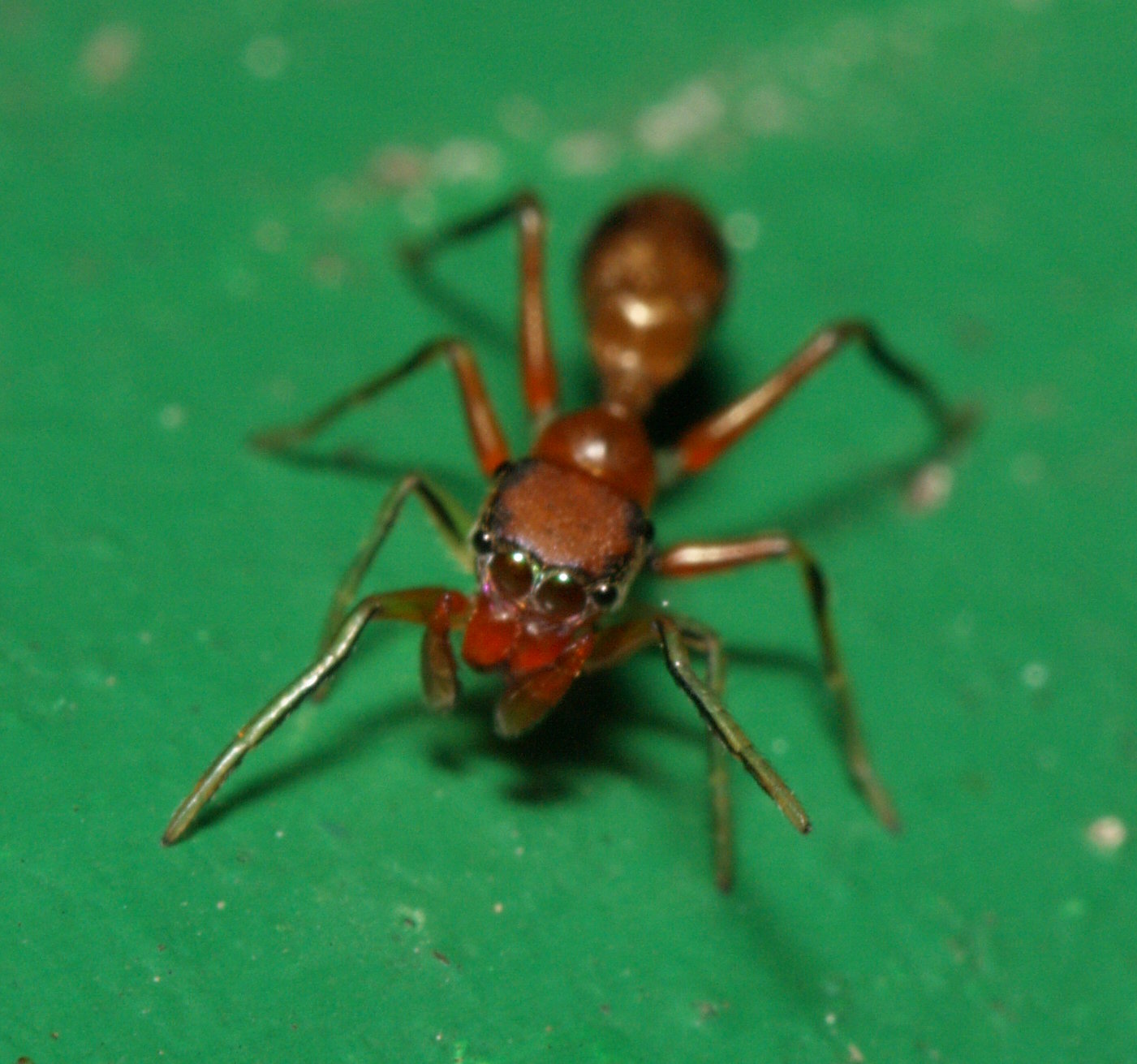
New research reveals how a certain group of jumping spiders mimic ants to avoid being eaten.
Small spiders are generally a much easier meal for predators than an army of aggressive ants armed with strong jaws, painful stings and their formic acid defense mechanisms.
Spiders, despite their reputation, are actually quite vulnerable to predators — their primary defense strategy is to run away. So, it makes sense that some arachnids would take on ant-like characteristics in the name of self-preservation.

Ant-mimicking jumping spiders of the genus Myrmarachne have evolved a variety of ant-like physical attributes, including a “false waist,” reflective hairs that resemble the shiny bodies of ants, and colored patches around their eyes. New research using high-speed cameras has revealed that they also behave in ways that ants do, like pretending to follow pheromone trails by moving in short bursts of irregular zig-zag patterns. Spiders were even observed stopping sporadically to wave their front legs in the air to simulate antennae during the study.
Data from the research showed that the spiders who did not mimic ants were targeted 4.5 times as often as ants, and 3 times more than spiders “in disguise.” So, it’s clearly an effective strategy.
But mimicry isn’t just to avoid predators; some spiders use the “disguise” to deceive their prey so they can eat them more easily. One species, for instance, will pounce on an isolated ant and bite it, falling onto a “safety line” of the spider’s silk to wait for the venom takes effect. Another will mimic an ant bringing a fallen comrade back to the nest, using the ant’s body as a shield.
Watch an ant-mimicking spider on a hunt in the video below:




